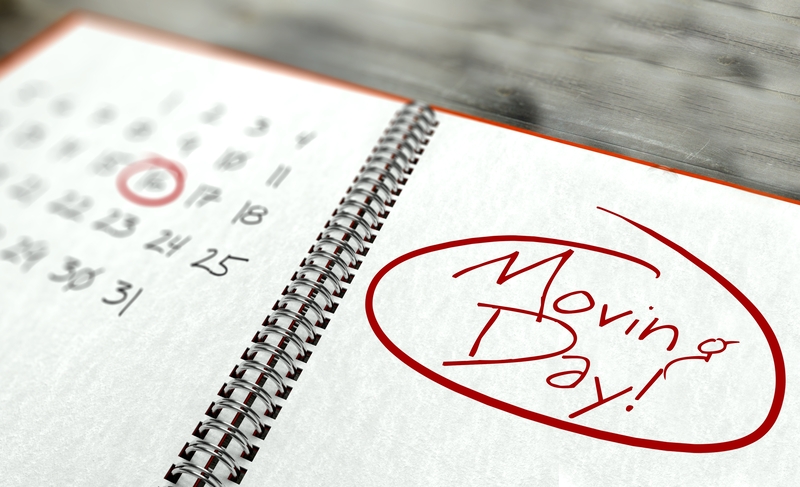Lift With Confidence When No One's Around: A Comprehensive Guide
Whether you're a dedicated home gym enthusiast or often find yourself hitting the gym during off-peak hours, knowing how to lift with confidence when no one's around is critical for both your safety and training progress. Many lifters relish the solitude, using it to fully focus on their workout routine. However, lifting alone can also bring unique challenges and, potentially, risks. This article will delve into how to maximize your results, keep yourself safe, and fully enjoy your solo sessions, turning isolation into an advantage rather than a concern.

Why You Might Find Yourself Lifting Alone
- Your schedule only allows early morning or late-night training.
- You have a home gym where you're often the only lifter.
- You prefer solitude for better focus and mindfulness.
- You want to avoid crowded gyms or prefer quieter environments.
Regardless of why you're working out solo, learning to lift with confidence when the gym is deserted can greatly improve your consistency and performance while minimizing anxiety and potential injury.
Understanding the Risks of Lifting Solo
It is important to acknowledge the unique risks associated with lifting when nobody else is present. These include:
- Emergency Situations: If something goes wrong, like a failed lift or sudden injury, help isn't immediately there.
- Lack of Spotting: Performing heavy compound lifts such as the bench press without a spotter increases the risk.
- Overconfidence: Without someone else watching, you might attempt lifts beyond your capability.
- Poor Form: It's easier to let your technique slip without feedback from a partner or trainer.
*But these obstacles can be addressed with the right preparation and mindset.*
How to Lift With Confidence When No One's Around
1. Build a Solid Foundation with Smart Planning
Before you even pick up a weight, the journey to safe and confident lifting starts with diligent planning and preparation.
- Stick to a Proven Program: Choose a training routine designed for your experience level and goals. Avoid improvising with unfamiliar heavy lifts on your own.
- Focus on Form: Perfect your technique with lighter weights. When you lift alone, prioritize form over weight to reduce injury risk.
- Warm Up Thoroughly: A complete warm-up routine prepares your muscles and joints, reducing injury risk when you're unsupervised.
2. Invest in Reliable Safety Equipment
Using the right equipment is crucial when you're lifting solo. Good gear can serve as your silent "spotter." Consider:
- Power rack/Cage: A power rack with safety pins or bars allows you to lift heavy with an automatic safety catch.
- Adjustable Spotter Arms: Use these with squat racks to catch failed lifts.
- Proper Collars: Clips or collars keep weights stable on the bar, reducing accidental sliding and imbalance.
- Weightlifting Belt & Straps: These accessories help protect your lower back and grip when going heavier.
3. Master the Art of Self-Spotting
Self-spotting is a learned skill that will increase your confidence during solo workouts. Here's how you can self-spot safely:
- Bench Press:
- Set safety bars just above chest level to catch the bar if you fail.
- Never use collars on barbell bench press when alone. If stuck, you can tip weights off safely.
- Squat:
- Set the safety pins to just below your lowest squat position.
- If you fail, shift your hips forward and drop the bar onto the pins.
- Dumbbell Lifts:
- Dumbbells are safer for solo pressing since you can drop them safely if needed.
4. Choose Solo-friendly Exercises and Rep Ranges
When alone, your exercise selection and rep ranges should always err on the side of caution:
- Favor Dumbbells Over Barbells: They're safer to drop and less likely to trap you if you fail a lift.
- High Volume, Lower Intensity: Stick to sets with more reps and lighter weight for your main compound lifts.
- Avoid One-Rep Max Attempts: Save those for when you have a spotter present.
- Consider Machines: Certain machines (like leg press, Smith machine, or cable systems) can mimic free-weight movements with added safety.
5. Listen to Your Body
When you lift weights alone, paying attention to the signals your body sends is absolutely essential:
- Never Work Through Sharp Pain: If a movement feels wrong, stop immediately.
- Start Conservative Each Session: Gauge your energy and mobility before ramping up intensity.
- Prioritize Recovery: When lifting alone, it's easy to push too hard trying to "prove" something. Stay smart.
6. Minimize Distractions and Communicate
Silence can be a double-edged sword. While it helps some lifters focus, it's also easier to get careless or distracted. Keep your workout area clear, your phone handy (but not distracting), and alert someone if possible:
- Keep Phone Accessible: Have a charged phone within reach in case of emergencies.
- Tell Someone: Let a friend or family member know when you're training and when you expect to finish.
- Emergency Access: If possible, keep your home unlocked or provide a key to someone you trust while working out.
Benefits of Lifting Alone--When Done Safely
There are significant upsides to mastering the skill of lifting with confidence when no one's around:
- *Focus and Mindfulness:* No distractions mean you can truly zone in on your technique and mind-muscle connection.
- *Flexible Scheduling:* You control your workout times and can adjust as needed.
- *Enhanced Accountability:* Every rep, rest break, and weight selection is solely your decision--leading to greater self-discipline.
- *Personal Growth:* Overcoming the initial anxiety of training solo fosters self-trust and empowerment.
Common Mistakes to Avoid When Lifting Alone
Even seasoned lifters sometimes fall into risky habits when training solo. Don't let these pitfalls catch you:
- Pushing to Failure: Never go to technical failure on dangerous lifts, especially without safety equipment or a spotter present.
- Ignoring Warm-ups: Rushing into lifts cold increases the chance of muscle strains or tears.
- Neglecting Hydration and Nutrition: Skipping pre-workout snacks or water can zap your energy and focus, raising risk of dizziness or injury.
- Poor Setup: Not adjusting safety bars, clearing the area, or minding equipment organization can all spell disaster if something goes wrong.
A Sample Home Workout Routine for Lifting Alone Confidently
Here's a full-body workout plan designed with solo lifters in mind. It uses equipment and movements that are safe, effective, and scalable:
Warm Up (5-10 minutes):
- Dynamic stretches (arm circles, leg swings, hip rotations)
- Bodyweight squats
- Push-ups
- Light stationary cardio (jump rope or stationary bike)
Strength Circuit (3-4 rounds):
- Goblet Squats (dumbbell or kettlebell): 10-15 reps
- Push-Ups or Dumbbell Bench Press: 8-12 reps
- One-Arm Dumbbell Row: 10-12 reps each side
- Standing Shoulder Press (dumbbells): 8-12 reps
- Deadlift Variation (kettlebell, dumbbell, or trap bar): 8-10 reps
Finisher (Optional):
- Plank: 2 x 60 seconds
- Farmer's Carry: 2 x 30 meters
Cool Down
- Foam rolling
- Static stretching (hamstring, quad, back, shoulders)
*Always use lighter weights when trying new exercises, and ensure safety for all movements when lifting solo!*
Technological Tools to Enhance Safety and Confidence
- Fitness Tracking Apps: These can log your sets and reps, helping prevent overtraining or under-recovery when self-coaching.
- Form Feedback: Use your phone's camera to record lifts for technique review.
- Wearable Devices: Some smartwatches and phones let you set emergency contacts or auto-call functions that activate if you don't respond after a failed movement.

Mental Strategies for Confident Solo Lifting
- *Positive Self-Talk:* Instead of dwelling on the "what ifs," focus on your preparation and past successes.
- *Visualization:* Before challenging lifts, imagine yourself completing them with perfect form.
- *Log Your Progress:* Journaling after each session helps reinforce a sense of achievement and lets you track improvements objectively.
The Bottom Line: Harness the Power of Lifting Solo
Decorated athletes, experienced powerlifters, and recreational lifters alike can all lift with confidence when no one's around--as long as they approach it with respect, safety, and reason. The solitude of a quiet gym or home setup offers not just privacy, but an unmatched chance for self-mastery, growth, and discipline.
To lift with confidence alone is to accept responsibility for your safety and progression. With smart planning, appropriate safety measures, and the right mindset, you'll come to love your solo sessions, transforming them into the most productive, liberating, and invigorating part of your fitness journey.
Takeaways: Lift Safely, Progress Consistently, Thrive Alone
- Safety First: Never sacrifice safety for ego. Use spotter arms and racks, and avoid maximal-effort lifts alone.
- Focus on Technique: Proper form doesn't just improve performance--it prevents injuries.
- Embrace the Benefits: Lifting by yourself can deepen focus, discipline, and accountability.
- Communicate: Always have someone who knows your training schedule, even if they aren't present.
Ready to lift with confidence when no one's around? Apply these strategies and experience how powerful, productive, and satisfying solo lifting can truly be.



